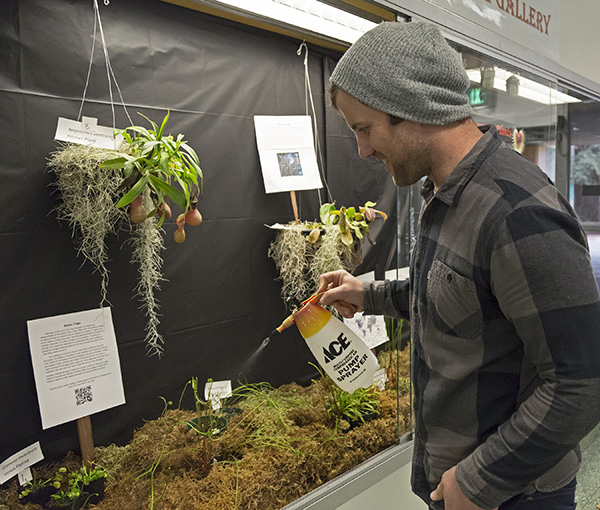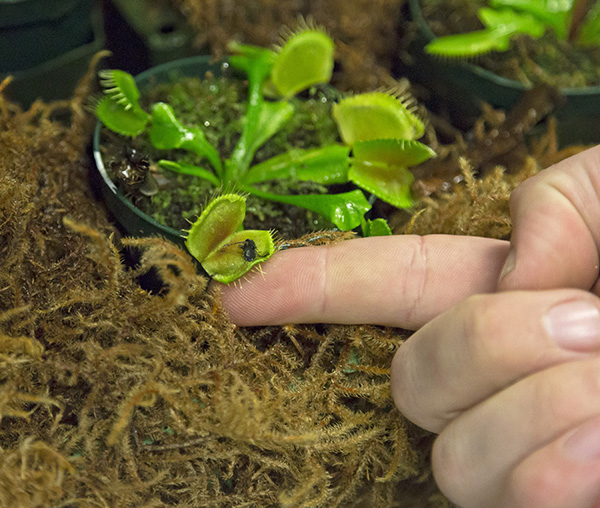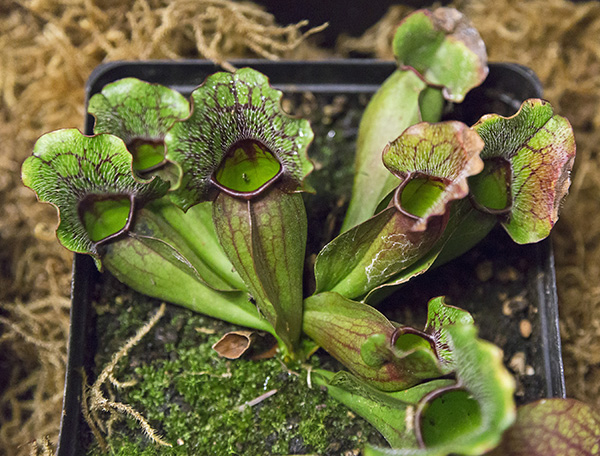 Greenhouse manager Daniel Pfarr tends to the Living Gallery of carnivorous plants. (Sacramento State/Craig Koscho)
Greenhouse manager Daniel Pfarr tends to the Living Gallery of carnivorous plants. (Sacramento State/Craig Koscho) A Venus flytrap.
A Venus flytrap. Pitcher plants.
Pitcher plants.Many gardeners have watched in horror as insects feed on their vegetables and flowers. But some plants have turned the tables and rely on insects and other small prey as a supplemental food source.
A number of those carnivorous plants are on display now in the latest installment of Sacramento State’s Living Gallery – “Carnivorous Plants: Efficacy in Survival.”
Located in the lobby of Sequoia Hall, the display features a number of critter-eating flora – both passive and active traps – assembled from specimens in the University’s own greenhouses by greenhouse manager Daniel Pfarr.
“We have these plants to exemplify biodiversity, as well as to preserve some of them. There are several that are on endangered status,” Pfarr says.
He points out that these still are plants, and they use sunlight and photosynthesis to manufacture their food. However, they developed in areas that had poor soil quality. “That’s why they’ve adapted to capture bugs and consume them – to make up for those missing soil nutrients.”
Passive-trap carnivorous vegetation includes the pitcher plant, in which the victim falls down into a long, pitcher-shaped appendage and then cannot get out because of the interior’s glossy, slick sides. Digestive liquid at the bottom then helps the plant absorb the nutrients.
The active trap types of these plants include the well-known Venus flytrap, whose jaw-shaped leaves quickly close on a subject when it lands between them.
And while human-eating plants are the stuff of legend and jungle movies, some plants can handle prey much bigger than insects and snails. Large pitcher plants in tropical areas have consumed small vertebrates that have fallen in.
Pfarr, who has managed an orchid nursery and done installations at orchid shows, was encouraged to create this latest exhibit by colleague Merrill Roseberry, who has put together previous Living Galleries, such as those showcasing butterflies and birds.
Biology Professor Jamie Kneitel contributed knowledge about pitcher plants (Sarracenia) and helped with educator communication for the display.
“I hope people will walk away from this exhibit with a better familiarization with a small part of the plant world,” Pfarr says. “And it would be great if someone was inspired in taking more biology courses.”
Visitors may come by the display any time Sequoia Hall is open, 8 a.m. to 5 p.m. Monday through Friday. The exhibit runs through Wednesday, May 17.
For more information, visit the Department of Biological Sciences at csus.edu/bios or call (916) 278-6535.
– Craig Koscho
